If you thought there were only 4 tastes, you thought wrong. There are actually 5!
- bitter
- salty
- sweet
- sour
- umami (pronounce it like “ooo-MOM-ee”)
So just what is umami? Umami is a word that describes this fifth flavor, but the concept is a bit difficult to wrap your head around.
Make sure to read this whole article because you’ll find out why umami fuels your obsession with food…and even why you may be overweight!
We borrow this word from Japanese because we don’t have another word for it in English. Translated, it means “pleasantly savory”, but that doesn’t cut it completely for a description. Let me break it down some more.
How to Describe Umami
Here are a bunch of words that describe the concept of umami:
- Deliciousness
- Salty-sweet
- Pleasantly savory
- Meaty
- Long-lasting
- Mouth-watering
- Full and tongue-coating
- Balances taste and rounds out flavor
Scientifically, umami results from the taste of an amino acid in salt form called glutamate and the nucleotides called guanosine monophosphate and inosine monophosphate.
Those are big words, but they’re helpful to know because if you see them in an ingredients label, you know they are used as a flavor enhancer.
There are a lot of other ingredient names used when umami is present, but I’ll get into that more later.
You are familiar with the taste of umami if you would agree that sprinkling parmesan cheese on top of your tomato pasta definitely kicks your spaghetti up a delicious notch.
Parmesan cheese has the highest quantity of naturally occurring glutamate than any other food and tomatoes have a lot, too. Putting them together is like: hello tastebuds!
Umami is also present in foods like:
- Caesar salad (parmesan, anchovies, worcestershire sauce all have lots of glutamate/umami)
- Seared, browned or roasted meat
- Mushrooms, roasted, cooked (think a mushroom sauce reduction using brown bits and meat juices, total umami kick!)
- Tomatoes, ripe or especially roasted
- Cured meats like prosciutto, pancetta or BACON, HELLOOOO
- Fermented fish sauces
Think of it: do you think of bacon as delicious just because it is salty…? No, of course not. It’s something else that is almost inexplicable. Until now….. It’s UMAMI!
The Discovery of Umami
The story goes that in the early 1900s a chemist named Kikunae Ikeda was eating a bowl of his wife’s dashi soup. In Japan, this is a typical soup used by itself or as a base for other soups (like miso soup, etc).

Kikunae Ikeda
To make dashi, you boil down a type of seaweed (kombu) with dried fish (bonito) flakes. When the proteins are broken down, glutamate is released.
It’s the same concept when you sear a steak or roast it in the oven for hours. Breaking down this protein releases the flavor. So you can create it by using a cooking technique that will break down the protein in this way…like fermenting, smoking, ripening, roasting, etc.
He noticed that the soup had a quality that he couldn’t describe. So he used the word umami.
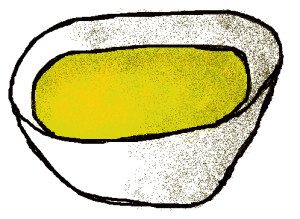
this is a bowl of dashi, i swear
As a chemist, he isolated the flavor and found that it came from glutamate. Basically, you can think of glutamate as a “taste amplifier”.
Glutamate or the nucleotides mentioned above released or added to any food will make it taste better than it would have before. And chemically, when the nucleotides are in conjunction with glutamate, it actually amplifies the umami even more.
This explains many of the traditional combinations in cooking:
- Marinara sauce with parmesan cheese
- Seared steak with mushroom sauce
- Caesar salad
- Fish sauce used in asian cooking
- Bacon. Omg, bacon.
Capitalizing on Umami: MSG!
Not only did Ikeda formally discover umami, but he also was able to isolate it and then reproduce it in its basic form: monosodium glutamate or more commonly known as MSG.
Ikeda patented MSG along with Saburosuke Suzuki II, a man who, in 1909, went on to create the first commercially available MSG product.
This packaged MSG powder brand is called Aji-no-moto, which means “the essence of taste”. You can buy it at any Asian market near you.
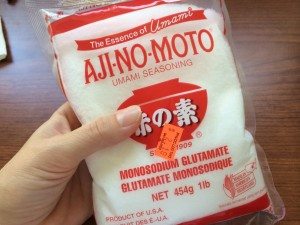
From the start, packaged MSG became a way to heighten the flavor of any salty, savory dish and make it much more palatable.
How is Umami Used in Food?
Nowadays, since we have been able to re-create the exact compound that creates umami, it is used in many of the savory food products that we eat as a flavor enhancer.
Mostly, it’s in the processed stuff that you can find in the center of the grocery store. Chips and snacks, that sort of thing.
What’s interesting is that there are many different forms of this flavor enhancer found in food, so it’s worth it to become familiar with some of the different names that denote a flavor enhancer.
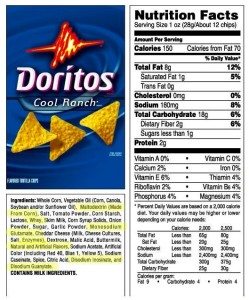
Some Common Names of Flavor Enhancers
Typically, a flavor enhancer is used to up the pleasant, savory taste of a food product. Because there aren’t super strict labeling laws here in the US, it’s easy to get a flavor enhancer in a product without having to be transparent.
It’s important to know the names of these because then you know you are dealing with something that is unnaturally delicious. “The more you know!”

- glutamic acid
- glutamate
- monosodium glutamate
- anything “hydrolyzed”, such as hydrolyzed soy protein
- calcium caseinate
- yeast extract
- autolyzed yeast
- torula yeast
- sodium caseinate
- yeast nutrient
- gelatin
- textured protein
- whey protein
- whey protein concentrate
- soy protein
- soy protein concentrate
- soy protein isolate
- anything “protein fortified”
- soy sauce
- soy sauce extract
- anything containing “enzymes”
- anything “fermented”
- carrageenan
- bouillon/broth
- natural flavor
- maltodextrin
- citric acid
- barley malt
- brewer’s yeast
- pectin
- malt extract
- seasonings
Why Is Flavor Enhancement a Problem?
Know that “too much of a good thing” saying? Well, of course glutamate and other flavor enhancers taste great. Of course they do.
That’s why we can’t stop eating those nacho chips! …I know from experience: I have been known to eat an entire bag of Doritos in one sitting….and then move on to the Oreos!
But if you eat too much of that processed stuff, you are affecting many different physical processes in an unnatural way. For example:
- Your tongue is bombarded with “super” tastes, and therefore is less likely to enjoy natural tastes. Think drinking Mountain Dew vs. snacking on a peach
- Your body has to process much more glutamic acid than it is supposed to
- Raising the level of glutamate in the body is said to overstimulate the neurons in the brain (aka excitotoxins) though the conclusions here are not well studied
- You develop unruly cravings for flavor enhanced food because of the brain stimuli and tastebud attack
- There is no regulation on how much of this enhancement we should eat, not enough is known about it, so we can’t know the overall physical effect it has on our metabolism, weight, mood, etc…
- In a small number of folks, ingesting any amount of synthetic glutamate can have serious effects. Your tolerance may not be known
So What Do We Do Now?
Glutamic acid is classified as a non-essential amino acid, meaning that our body can produce it all by itself without any help from foods that we eat.
And knowing that companies basically drench every single processed savory food product in it, we can safely assume that we are getting too much of it if we eat a lot of processed foods.
We would do best to avoid products that contain flavor enhancers as much as possible or even altogether and opt for natural sources of glutamate in foods that we have prepared ourselves.
This way we can control what goes in our bodies and by using natural, whole foods. We know that we are getting the right amounts of nutrients.
Not to mention that processed foods almost completely lack these vital nutrients that we need, so we are so much better off eating plant-based foods with lots of micronutrients and fiber.
You can eat some processed foods once in a while, but this rare use is key.
Why flood your body with artificially created flavors when we have an Earth full of flavors at our farmers markets and produce aisles?

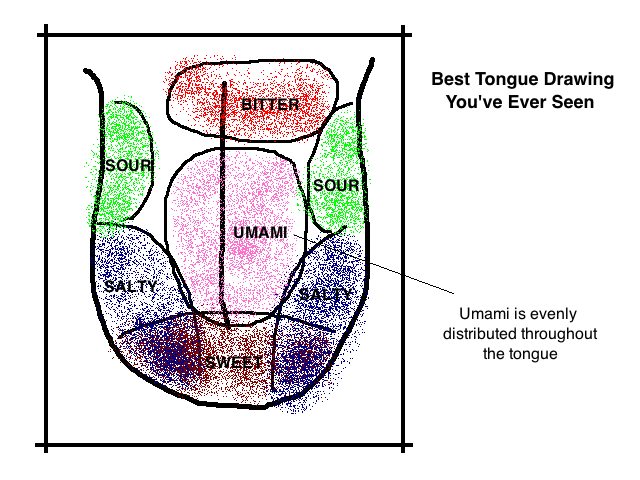





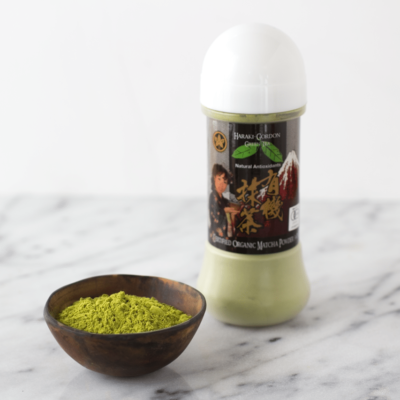




Dear Cheri?
I enjoyed a lot reading this article!
Thanks so much.
Àngels
Hiiiiii Angels! So nice to see you again and thank you very much.
Thanks for the really informative and interesting article! Great read!
You are SO welcome Calvin’s Mom!
Interesting. Thank you and keep the info coming. xxoo
P.S. I love the graphics. Can you put me in touch with your artist?
I was just writing a blog post on a recipe for home-made bacon and found your lovely article doing research. This is one of the clearest and best articles I have read on Umami. Thanks for sharing.
Oh my goodness thank you so much for commenting Connie! I really appreciate it. That one took me a long time to write! :D
I was very pleased to find this article on one of my first attempts to educate myself on Umami. Thank you for the very well thought out and explained information. I’ve saved this post for future reference.
You’re so welcome Don!
If only natural foods were as tasty as umamified foods. We’d be addicted to brussels sprouts and spinach! But, sadly, spinach is nasty-swampy tasting to me, and brussel sprouts smell like ammonia.
Excellent article, btw.
Thank you!
Haha thanks Robin, I think. Just so you know, those foods begin to taste amazing once we’ve detoxed off the Standard American Diet foods…but that is no small feat, to be sure. :) thanks for your input! <3
I just read your article on umami. I had never heard of it and looked the word up because it was in a crossword puzzle. (See, crosswords improves my vocabulary.) Very good info. I thought all MSG did was help tenderize your food and you shouldn’t use it before you have back surgery!!? (I don’t know about after back surgery .) Now I know. Thanks again. Now on to try to stop eating so much processed foods .
Ahhh you’re so welcome Donna! I’m glad you enjoyed that one…keep doing those crossword puzzles! Next time I have back surgery, I think I’m gonna avoid it too. :D
Nice Article!
Best explanation I have read so far! n easy to understand!
Thank you!
So glad you loved it Vicky!!